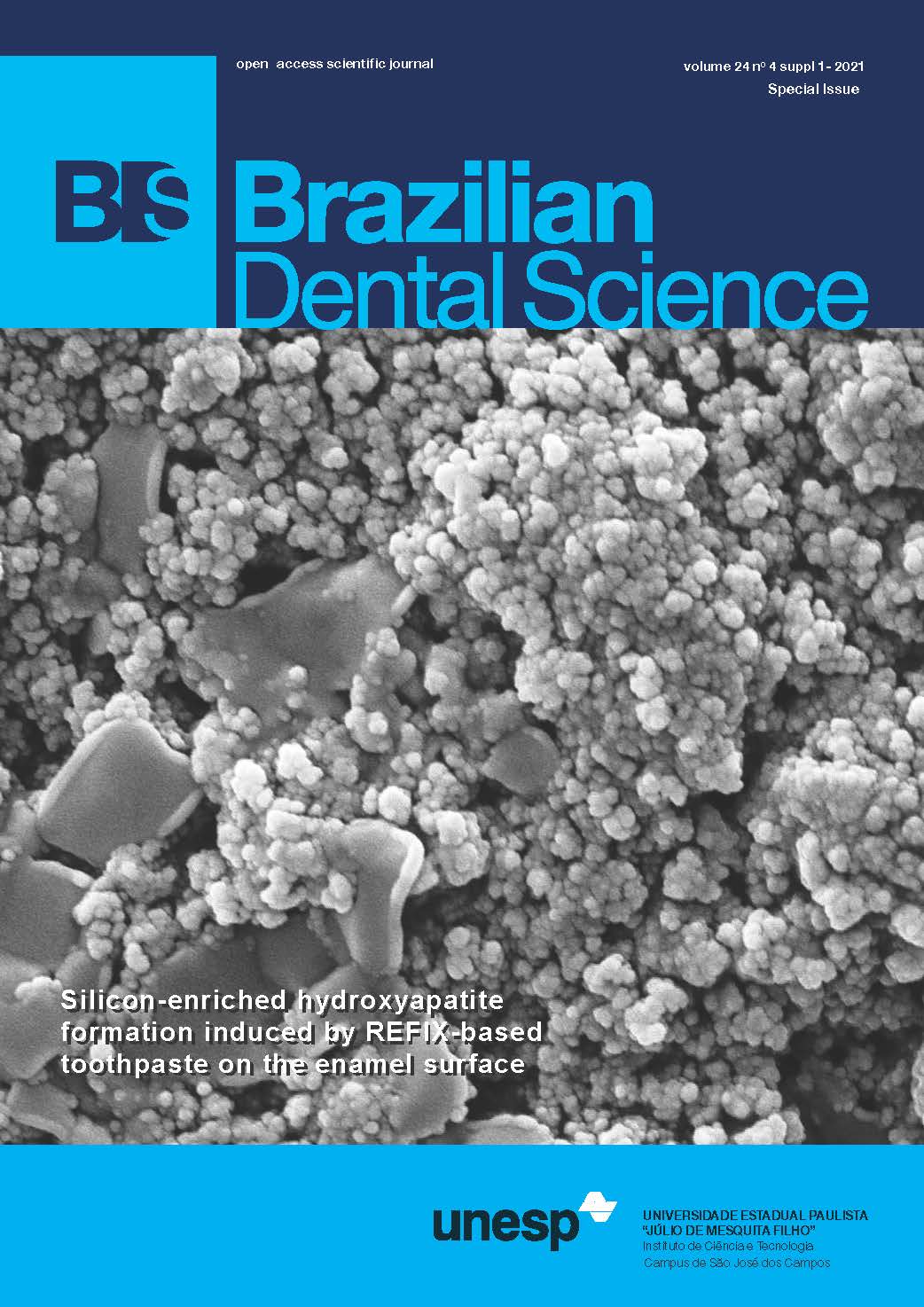Amalgam allergy and Burning Mouth Syndrom: treatment and 25 years recall
DOI:
https://doi.org/10.4322/bds.2021.e2817Abstract
Background: Burning mouth syndrome (BMS) is a non-neuropathic chronic orofacial pain condition, characterized
by the presence of burning/warm sensation without specific mucosal lesions. Objective: The aim of the present
clinical case report is to describe the positive outcome of dental treatment of a patient with BMS and followed
up for 25 years. Data Treatment: This report describes the case of a 50-year-old black woman sought treatment
for burning, and persistent swelling of tong (24h/day) occurring over years. Clinical evaluation of the oral
environment revealed the tongue with cracking, darkened points areas, surrounded by whitish areas. Twelve
teeth presented extensive amalgam restorations. Patch testing revealed a very strong hypersensitivity to Amalgam.
All amalgam restorations were substituted by composite resin restorations. Results and Conclusion: Burning
sensation disappeared completely after these restorations had been changed. After 25-year follow-up period, it was
observed that burning sensation has never been felt anymore. Clinical Significance: Burning mouth syndrome
is a chronic orofacial pain, usually without specific mucosal lesions. The etiology is complex and multifactorial
and the treatment should be made specifically for each pacient.
KEYWORDS
Burning mouth syndrome; Composite resin; Dental amalgam.
Downloads
Downloads
Published
Versions
- 2022-01-17 (2)
- 2021-12-17 (1)
How to Cite
Issue
Section
License
Brazilian Dental Science uses the Creative Commons (CC-BY 4.0) license, thus preserving the integrity of articles in an open access environment. The journal allows the author to retain publishing rights without restrictions.
=================




























